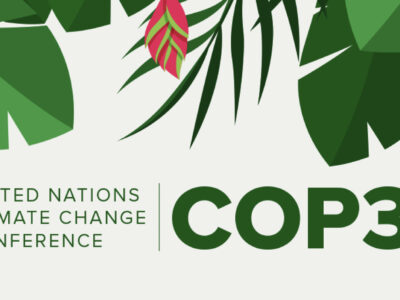Though most attention last week focused on the Supreme Court ruling upholding federal reform of the health-care system, the U.S. Court of Appeals for the District of Columbia issued the most important judicial decision on climate change in five years. That decision upholds the Environmental Protection Agency’s power to regulate greenhouse gases, and it is very good news for those who favor this approach.

In 2007 the U.S. Supreme Court ruled, in the landmark case of Massachusetts v. Environmental Protection Agency, that a statute enacted by Congress in 1970 — the Clean Air Act — authorizes EPA to regulate greenhouse gases, including carbon dioxide. Not much happened for the balance of the Bush administration, but shortly after Barack Obama took office in January 2009, EPA issued an “endangerment finding” — a formal determination that greenhouse gases pose a danger to public health and welfare. That finding is a prerequisite to further regulation.
With that in hand, EPA proceeded to issue a set of major new rules. Among other things, it and the National Highway Traffic Safety Administration issued new standards (the first in decades) for fuel economy of automobiles and light trucks. EPA also required major stationary sources of air pollution, such as power plants and factories, to obtain permits for their greenhouse-gas emissions.
Industries (led by the fossil fuel lobby) and states (led by Texas) that oppose such regulation reacted furiously. They filed more than 100 lawsuits against EPA. Some claimed that the “Climategate” e-mails and a handful of errors in reports of the Intergovernmental Panel on Climate Change had cast doubt on the integrity of the climate science underlying the endangerment finding. They also took an opposite tack, and said EPA’s regulations of stationary sources were too lax, because they regulated only the largest sources and not the millions of small sources that exceed certain statutory thresholds.
The court held a highly unusual two days of argument on February 28-29, 2012, in its largest courtroom, but still, many would-be spectators could not get in. The fate of the regulations hung in the balance as legions of lawyers argued before the three-judge panel — one appointed by President Reagan and two by President Clinton.
The suspense ended on June 26, with the unanimous opinion in what came to be known as Coalition for Responsible Regulation v. EPA. It was a complete win for EPA.
In upholding the endangerment finding, the court recited the extensive studies that EPA has performed or reviewed, and how carefully EPA had assessed them. It said EPA had appropriately utilized and critically reviewed reports from the IPCC and others. It declared that “EPA is not required to re-prove the existence of the atom every time it approaches a scientific question.” It found that the record amply supported EPA’s conclusions.
This decision continues an unbroken streak for climate science in the courts. Hundreds of lawsuits have been filed in U.S. courts on climate change. Not a single judge, in a written opinion or dissent, has expressed skepticism about the existence and dangers of human-influenced climate change. Many courts have refused to engage the issue, finding various legal doctrines prevented them from doing so, and a few have acknowledged the existence of controversy, but none have embraced the skeptics’ arguments. There has been only one full-fledged trial on climate science, with sworn expert witnesses on both sides (in a case on Vermont’s adoption of motor vehicle emission standards); the court sided with the environmentalists’ experts, including James Hansen, director of the Columbia University-affiliated NASA Goddard Institute for Space Studies.
The D.C. Circuit also ruled that the other challenges to the EPA regulations were without merit, or that the big companies that were suing had no standing to challenge EPA rules that exempted small emitters.
The result is that EPA now has a clear legal path to proceed with its ambitious plans to promulgate and implement regulations limiting the emission of greenhouse gases.
Michael B. Gerrard is Andrew Sabin Professor of Professional Practice, director of the Center for Climate Change Law at Columbia Law School, and associate chair of the faculty of the Earth Institute.



